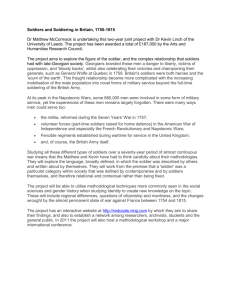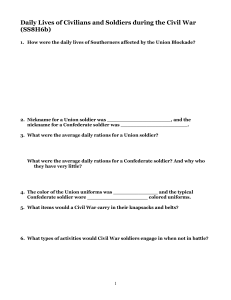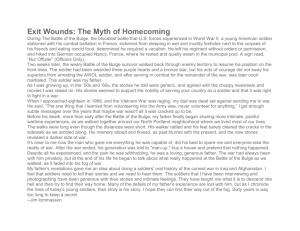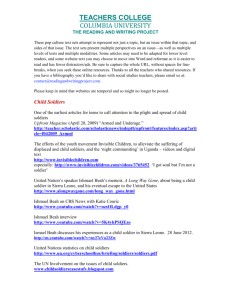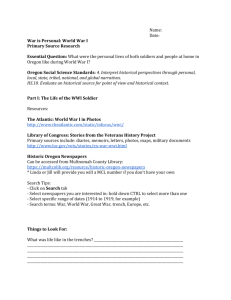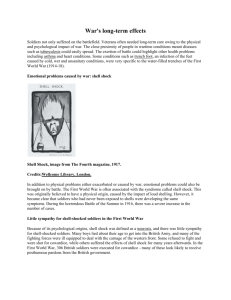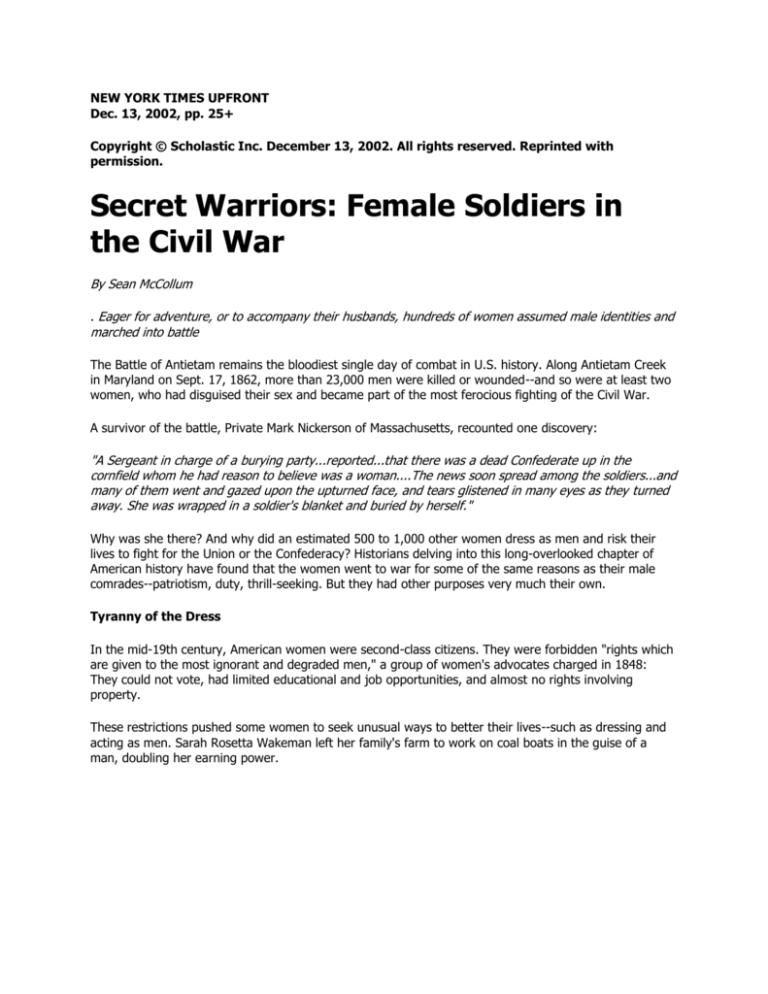
NEW YORK TIMES UPFRONT
Dec. 13, 2002, pp. 25+
Copyright © Scholastic Inc. December 13, 2002. All rights reserved. Reprinted with
permission.
Secret Warriors: Female Soldiers in
the Civil War
By Sean McCollum
. Eager for adventure, or to accompany their husbands, hundreds of women assumed male identities and
marched into battle
The Battle of Antietam remains the bloodiest single day of combat in U.S. history. Along Antietam Creek
in Maryland on Sept. 17, 1862, more than 23,000 men were killed or wounded--and so were at least two
women, who had disguised their sex and became part of the most ferocious fighting of the Civil War.
A survivor of the battle, Private Mark Nickerson of Massachusetts, recounted one discovery:
"A Sergeant in charge of a burying party...reported...that there was a dead Confederate up in the
cornfield whom he had reason to believe was a woman....The news soon spread among the soldiers...and
many of them went and gazed upon the upturned face, and tears glistened in many eyes as they turned
away. She was wrapped in a soldier's blanket and buried by herself."
Why was she there? And why did an estimated 500 to 1,000 other women dress as men and risk their
lives to fight for the Union or the Confederacy? Historians delving into this long-overlooked chapter of
American history have found that the women went to war for some of the same reasons as their male
comrades--patriotism, duty, thrill-seeking. But they had other purposes very much their own.
Tyranny of the Dress
In the mid-19th century, American women were second-class citizens. They were forbidden "rights which
are given to the most ignorant and degraded men," a group of women's advocates charged in 1848:
They could not vote, had limited educational and job opportunities, and almost no rights involving
property.
These restrictions pushed some women to seek unusual ways to better their lives--such as dressing and
acting as men. Sarah Rosetta Wakeman left her family's farm to work on coal boats in the guise of a
man, doubling her earning power.
(See picture, "Wakeman, Sarah Rosetta: Civil War Soldier.")
After the outbreak of the Civil War in 1861, Wakeman met a group of soldiers.
The Union's $152 enlistment bonus--roughly half the yearly salary of an
ordinary worker--plus regular pay, was too good to pass up. She joined the
153rd New York State Volunteers as Lyons Wakeman. In a letter to her family,
the five-foot private celebrated her autonomy, saying she was as "independent
as a hog on the ice."
Others, like Frances Clayton of Minnesota, and a Confederate woman known
only as "Captain Billy," joined up as men to stay close to their soldierhusbands. Yet both remained in uniform, their genders hidden, after their husbands were killed.
(See picture, "Clayton, Frances: Disguised As a Civil War Soldier.")
Fond of Adventure
Sarah Edmonds, 17, a Canadian, became Franklin Thompson to escape an
arranged marriage. She sold Bibles in the U.S. before joining a Michigan
regiment. She revealed her desires in an 1865 memoir, Unsexed, or The
Female Soldier:
"I am naturally fond of adventure, a little ambitious and a good deal
romantic and this together with my devotion to the Federal cause and
determination to assist to the utmost of my ability in crushing the rebellion,
made me forget the unpleasant items."
(See picture, "Edmonds, Sarah: Disguising Herself As a Man.")
Social conventions of the time made it possible for many of these soldiers to
conceal their sex. Americans did not carry identification in the mid-1800s, so
enlistees could create an alias and assume a new identity. A simple haircut
allowed many young women to share the youthful appearance of teenage
enlistees. With volunteer armies eager to fill their ranks, physicals were
perfunctory: Thompson's exam consisted of "a firm handshake."
Some women bound their breasts, and wore high collars to hide the absence of an Adam's apple. Others
were aided in their masquerades by the fact that most soldiers, under their uniforms, wore full-length
"long johns," rarely removed, even for bathing. And because camp toilets were often foul-smelling pits, it
was not unusual for soldiers to relieve themselves in the privacy of bushes, say DeAnne Blanton and
Lauren M. Cook in their new book, They Fought Like Demons.
Besides Antietam, women are now known to have fought in most of the war's major battles, including
Bull Run, Shiloh, Fredericksburg, Vicksburg, and Gettysburg.
Their true numbers may never be known. Many were unmasked only after being wounded or killed.
Kansas infantryman Alfred J. Luther died of smallpox in March 1863 while serving in Louisiana. In a letter
home, a Minnesota comrade wrote:
"After death, the somewhat startling discovery was made...that their companion [Luther], beside whom
they had marched and fought for nearly two years, was a woman....She was brave as a lion in battle and
never flinched from the severest fatigues or the hardest duties."
Those who died of disease or were killed in battle were usually buried beside their comrades in arms,
regardless of their sex. But survivors who were unmasked were drummed out of their units. Some would
travel to a different state, and rejoin in male attire.
(See picture, "Velazquez, Loreta Janeta: Disguised As a Soldier.")
Postwar Lives
Though many civilians were shocked by their acts--when they became known-the courage and exploits of the female soldiers endeared them to fellow
combatants. In 1865, United States Service Magazine wrote:
"Those who generalize on the...unladylikeness of such conduct are unquestionably in the right, according
to the practical parlor standard of life; but they know very little of the vast variety of phases which
humanity assumes, or of the strange and wonderful moulds into which it is forced by Nature and
circumstances."
After the war, some of the female soldiers kept their male identities. Private Albert D.J. Cashier returned
to Illinois and worked as a handyman. Only after a car accident in 1911 did his secret (he was born
Jennie Hodgers) unravel. But most of the women likely returned to civilian life in dresses--among them,
Franklin Thompson who, as Sarah Edmonds again, married and had
children.
(See picture, "Hodgers, Jennie: Disguising Herself )


